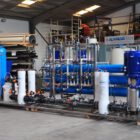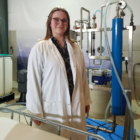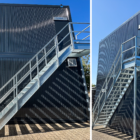Chromium(III)
Chromium(III), also known as chromium III ion or chromium trioxide, is one of the most common oxidation states of chromium (alongside chromium(VI)) and plays an important role in industrial water and wastewater treatment. Chromium(III) is the trivalent cation Cr³⁺ and is chemically and toxicologically very different from chromium(VI), which is considered to be a highly toxic and hazardous substance.








